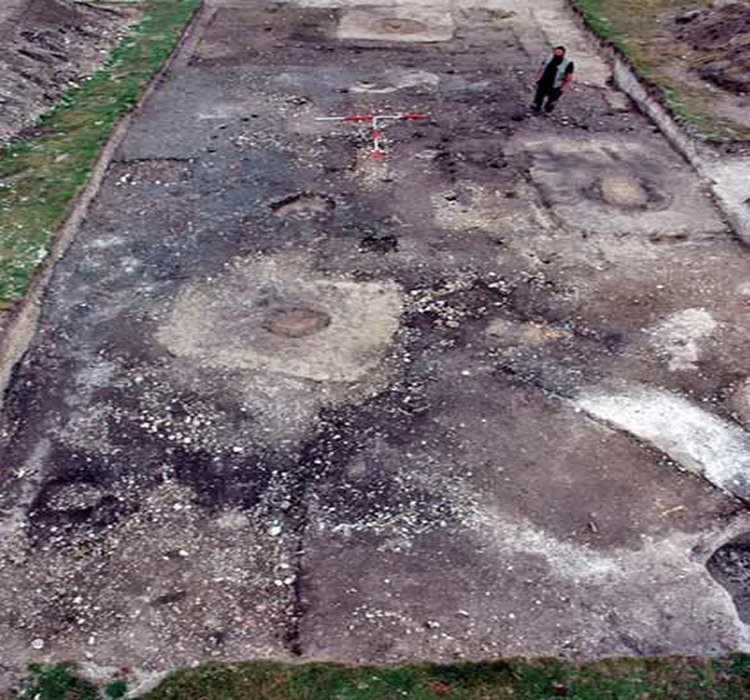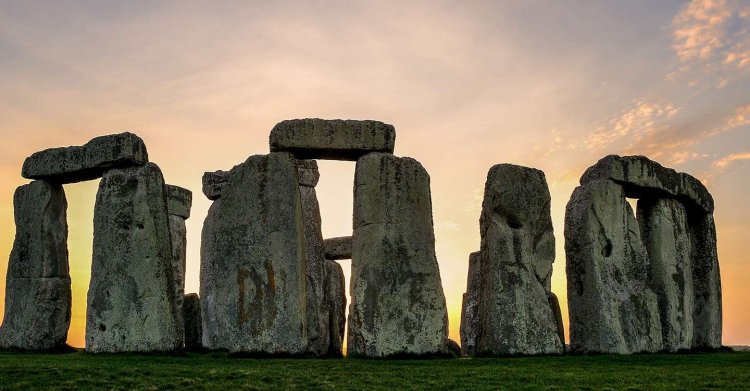AncientPages.com - Evidence from settlement where Stonehenge builders lived suggests well-organised community feasting.
Milk, yoghurt and cheeses could have been seen as “exclusive” foods or eaten predominantly in public ceremonies around the time Stonehenge was built, according to archaeologists using pottery and animal bones to analyse food from organised feasts during the 25th century BC.
New evidence from Durrington Walls, a late Neolithic monument and settlement site where the builders of nearby Stonehenge are thought to have lived, shows that pots in ceremonial spaces mainly carried dairy produce. Barbeque-style roasted pork and beef was detected in the chemicals of cooking vessels found in residential areas from the period,' reports Culture24.

Experts in York have compiled a detailed picture of food and cuisine near Stonehenge© Mike Parker Pearson
“Animals were brought from all over Britain to be barbecued and cooked in open-air mass gatherings and also to be eaten in more privately organised meals within the many houses at Durrington Walls,” says Professor Mike Parker Pearson, the University College London Professor who is the Director of the Feeding Stonehenge project.
“The special placing of milk pots at the larger ceremonial buildings reveals that certain products had a ritual significance beyond that of nutrition alone. The sharing of food had religious as well as social connotations for promoting unity among Britain’s scattered farming communities in prehistory. ”
“This new research has given us a fantastic insight into the organisation of large-scale feasting among the people who built Stonehenge.”

"The sharing of food had religious as well as social connotations for promoting unity among Britain’s scattered farming communities in prehistory. ”
Together with researchers at the University of Sheffield, Parker Pearson’s team found “very little” evidence of plant food preparation across the site. They say mass animal consumption – particularly of pigs who were killed before reaching their maximum weight – presents “strong evidence” of planned autumn and winter slaughtering ahead of feasts.
“Evidence of food-sharing and activity-zoning at Durrington Walls shows a greater degree of culinary organisation than was expected for this period of British prehistory,” says Dr Oliver Craig, of the University of York, the lead author on the new paper in archaeological journal Antiquity.
The main method of cooking meat is thought to have been boiling and roasting in pots – probably around indoor hearths.
Larger barbeque-style roasting was found to have taken place outdoors, evidenced by distinctive burn patterns on animal bones.
Bones from all parts of the animal skeleton were found, indicating that livestock was walked to the site rather than introduced as joints of meat.
Isotopic analysis indicates that cattle originated from many different locations – some far away from the site. This suggests a large number of volunteers were likely to have been drawn from far and wide.
The patterns of feasting contradict suggestions of a slave-based society where labour was forced and coerced.“
The inhabitants and many visitors to this site possessed a shared understanding of how foods should be prepared, consumed and disposed. This, together with evidence of feasting, suggests Durrington Walls was a well-organised working community.”
AncientPages.com
source: Culture24





